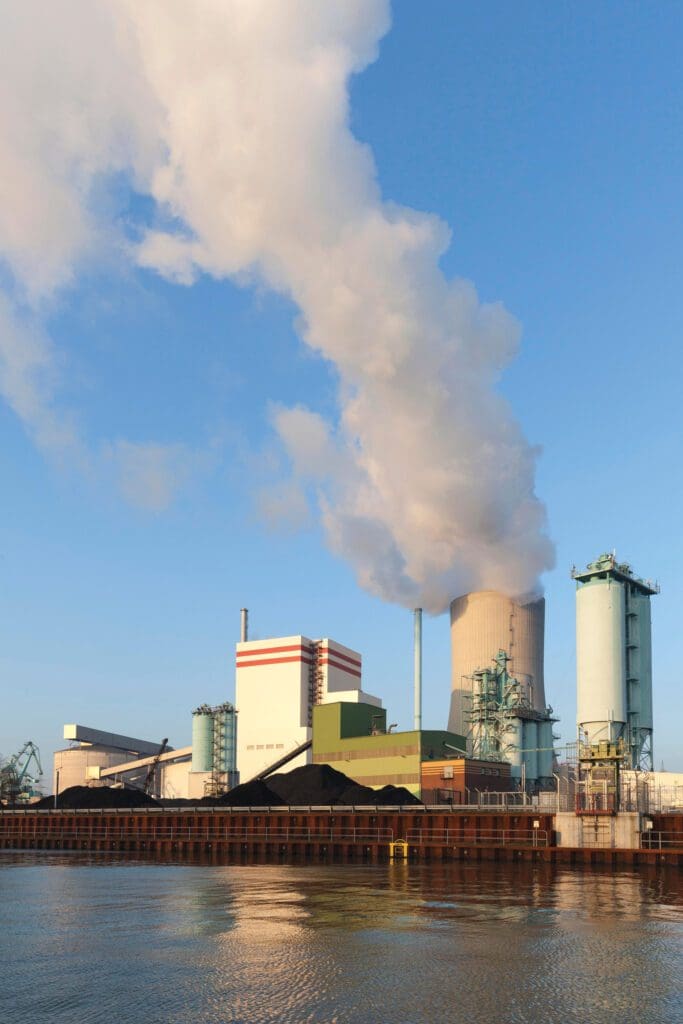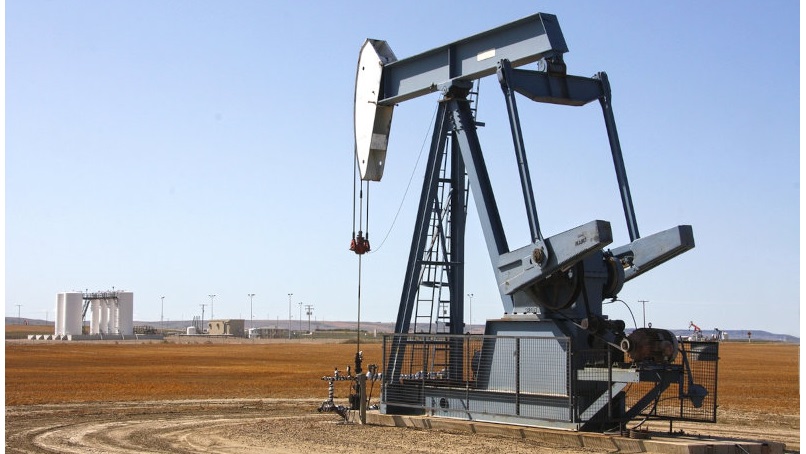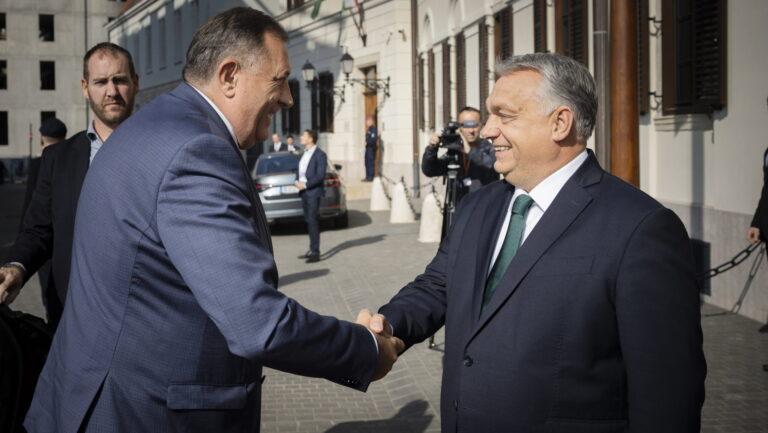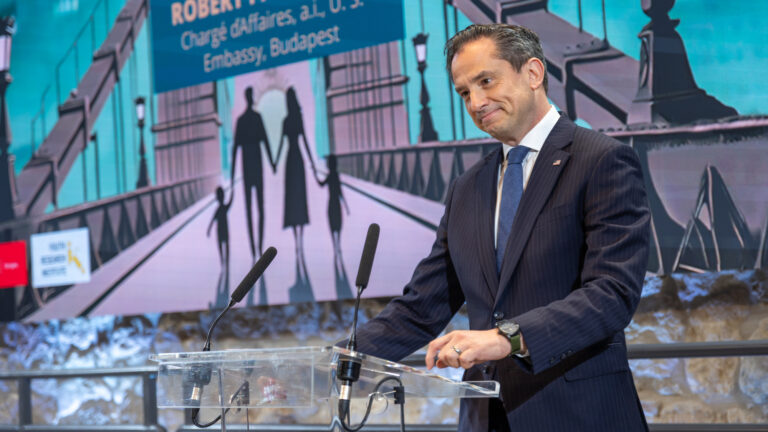This article was published in Vol. 2 No. 5 of the print edition
The European Union is going to spend hundreds of billions of euros in the next decade on green issues through various programmes, including the EU Green Deal, Next Generation EU, and REPowerEU. Its ambitious plans also include making Europe the first carbon-neutral continent, emitting a lower volume of greenhouse gases, particularly carbon dioxide, than it can trap by natural or artificial means. The EU intends to reduce the rate of emission of greenhouse gases to the levels recorded in the 1990s. Simplistically, this is the current measure we can employ to decide precisely and objectively whether the EU is managing to keep to its timetable for a green transition.
But what makes carbon neutrality a must? The EU wants to take action in the interest of a more viable future and a more sustainable environment, which is crucial, but it still has a less noble and less romantic side to it. Europe, which set off the industrial revolution, colonized the globe, and had a major impact on the history of humankind for hundreds of years, lost its momentum after the World Wars, and its superpower status was weakened in comparison with America and Asia. Sleepy old Europe has been squeezed out of most of today’s strategic industries; in sectors with high innovation potential, representing considerable added value—including, e.g. social media, information technology, digitalization, semiconductor manufacturing, 5G, navigation technologies, and Fintech—Europe may still have a few shots, but, overtaken by its competitors, it is unable to score such spectacular goals any more.
Today, it has become crystal-clear that climate change is more than just a trendy topic. Despite the crises, actors of various spheres of European structures of power, including the economy (corporations), culture (the media and the intelligentsia), and politics (parties and political institutions), have remained committed to environmental protection, just like European citizens themselves. According to all surveys conducted in member states and at the EU level, the overwhelming majority of people consistently regard the fight against climate change as one of the most important issues.
As a result, the EU decided to spearhead the global fight against climate change. It has realized that if it becomes the flagship of the green transition, it will have the opportunity to recover its position as a global player. Those who set the agenda of policies affecting the green transition, develop the respective economic models and funding mechanisms, and export the relevant know-how and technologies, will become indispensable actors in the global economy and the international political arena.
Different assumptions and narratives exist concerning the outcome of the war and what will come next
Thus, one of the most important issues for the EU today is whether its plan succeeds, and how the war in Ukraine and the resulting economic difficulties (the spill-over effects of the war) will impact the implementation of this ambitious endeavour. In this, there is no consensus: different assumptions and narratives exist concerning the outcome of the war and what will come next. I will sketch a few opposing approaches below, but leave it to the reader to decide which version is the most probable scenario.
According to Pessimists, the Green Transition Is Slowing Down
Pessimists are of the opinion that it is a constant feature of wars that they, in themselves, directly hinder the accomplishment of climate goals. Military actions, in general do not have any beneficial consequences on nature. Let us consider the brutal effects of Agent Orange, a herbicide used in the Vietnam War, on flora and fauna and people who subsequently suffered from developmental abnormalities. Or take the war in Iraq, where Saddam Hussein’s troops set 700 Kuwaiti oil wells on fire, causing emissions of harmful materials, which amounted to 3 per cent of the aggregate global greenhouse gas emission in the period. The operation of military heavy industry, the infrastructure hit in the course of wars, and the operation of the war machine (including military equipment) are all harmful to the climate. It may sound sensational, I know, but it is often cited as an example that a single F35 fighter plane burns 6,000 litres of fuel per hour. Tanks and other artillery vehicles are also hard on the environment. Though the direct effects of wars on the climate are tangible and extremely harmful, they remain comparatively insignificant. The indirect effects of the war in Ukraine on climate change, however, are significantly more treacherous and go much deeper.
Natural gas is needed for the operation of industry, for satisfying the demand for heating, and for implementing the green transition itself. Few people are aware of the fact that the more weather-dependent energy production we choose, the more natural gas we need. The reason for this is that when wind farms and solar power generation facilities are idle (e.g. when there is no wind or at night), the missing electric capacity is ensured in most countries by quick-start, flexible, gas-fuelled power plants. Thus, the first problem is that the less natural gas we have, the more difficult it becomes to extend wind-based and solar capacities and to integrate them into the power grid, thus allowing us to replace fossil fuels and reduce greenhouse emissions.
However, natural gas has become a scarce resource in Europe. Before the war, the EU imported 153 billion cubic metres of natural gas per year from Russia, but only a fraction of this arrived in the second half of 2022. International actors are trying to make up for the missing quantity mainly by delivering liquefied natural gas (LNG) to Europe, but this is not available in the volumes required in Europe, and it also inflicts more environmental damage than gas delivered by pipeline. Based on the assessment of Rystad Energy, the aggregate amount of capital investment in the LNG sector will reach USD 42 billion by 2024, representing a 50-per cent growth compared with the current level of investment.1
More energy means more greenhouse gas emissions—but this is only part of the problem
LNG is the cleansed liquid version of natural gas, cooled to a minimum of 161.5°C, with a 625-fold volume reduction as it is turned into a liquid state, which then has to be re-converted into gaseous form before end use. The liquefaction of one kilogram of natural gas requires approximately 1,188 kJ of energy, and its re-gasification requires 830 kJ, which means that LNG is considerably more energy-intensive than pipeline gas. More energy means more greenhouse gas emissions—but this is only part of the problem. In the case of LNG, in addition to a multi-phase production process, shipping by tankers already entails considerable greenhouse gas emissions.2 Based on the internationally accepted method of calculation adopted by the Department for Business, Energy & Industrial Strategy of the government of the United Kingdom (BEIS), one ton of well-to-tank LNG entails emissions equivalent to 0.88 tons of CO2 on average, whereas pipeline gas arriving in the UK results in emissions equivalent to only 0.33 tons of CO2.3 Thus, if the EU intends to substitute Russian pipeline gas deliveries with LNG because of the war and the embargos, then it will significantly contribute to the increase of greenhouse gas emissions, even if only a part of these emissions happen in the European continent.
There is, however, a more pressing issue than LNG: coal. Several countries in Europe are sitting on enormous natural coal reserves. As a result of the war, European countries announced one after the other that they would reopen their coalmines or postpone their previously set dates for the exclusion of coal from their energy mix. Among others, the Czech Republic, Greece, Austria, the Netherlands, Italy, France, Germany, and the UK have announced that they would respond to the energy emergency by restarting coal-fired power stations, postponing their closure, or increasing their rates of production—even though officially most of these countries have not modified their agenda of getting rid of coal. Twenty-two member states of the EU had previously announced that between 2025 and 2033 they would permanently discontinue the utilization of coal for industrial power generation. Through its Just Transition Fund, the EU even earmarked EUR 17.5 billion for providing aid to areas affected by the discontinuation of coal mining. Moreover, in an effort to broaden this programme, it was agreed at the Glasgow climate summit of the UN that the EU, some of its larger member states, and the US would make a sum of USD 8.5 billion available to South Africa to help it switch from the utilization of coal to cleaner sources of energy.4
Now each of these donor countries has started to use coal again on a major scale; what is more, they are now competing for cheap coal imports. The use of coal in the EU jumped by 14 per cent due to the economic recovery in 2021, and based on the forecast of the International Energy Agency, it may further expand by another 7 per cent this year, as a result of the war.5 In Germany, a country considered by many to spearhead the European green transition, almost 30 per cent of gross energy production was based on coal or lignite in the first half of 2022.6 Coal is the most polluting fossil fuel. Although, in the course of its extraction and transportation, methane— highly damaging to the climate—is not released, unlike in the case of natural gas, generating a unit of energy from coal releases at least 50 per cent more CO2 into the atmosphere than what is emitted in the case of burning natural gas, not to mention its additional adverse health effects. If coal mining continues to be promoted in the EU, it will have a major negative impact on achieving climate neutrality by 2050.
More than 40 per cent of the base material of primary energy production came from renewable sources
The burning of biomass, that is, agricultural materials, plants, especially wood and products made of/from wood, continues to be a very important part of energy production. Based on Eurostat data, more than 40 per cent of the base material of primary energy production came from renewable sources, more than half of which, however, was biomass.7 In general, little is said about biomass, but this single piece of data clearly shows that its role in energy production and environmental policy should not be underestimated. Wood, under the current system of carbon accounting (RED II)— disputed by many—is considered a renewable source of energy, since the quantity of CO2 trapped by plants while they are alive is the same as the quantity of CO2 emitted when they are burnt. Critics say that wood should be excluded from renewables because while the carbon capture phase may last for decades, the emission takes place in a few minutes when wood is burnt. Due to this temporal aspect, even if we ensure the sustainable reforestation of areas where timber was harvested, the rapid increase of biomass within the energy mix still jeopardizes the attainment of climate objectives by deadlines which are rapidly approaching. More than 400 million tons of carbon dioxide is released annually by burning wood, which is equivalent to the yearly emissions of Italy or Poland.8 The utilization of wood for producing energy may continue to increase in the EU—not surprisingly, since forests can be renewed, unlike fossil fuels, and wood can serve as an inexhaustible source of energy, supporting energy independence and the supply security of the member states. Still, the increased exploitation of biomass will make it more difficult to achieve emission targets.
In a social-psychological sense, the crisis also works against the green transition. As proposed by the concept of a ‘finite pool of worries’, human beings are only capable of worrying about a finite number of problems at a given time. We are forced to prioritize our worries, and we tend to pay attention to problems which affect us more directly and intensely. The difficulty we worry about the most is the one closest to us in space and time. Today it is whether we will have hot water, whether we will have heating in winter, and other similar questions—but not climate change.
Issues of security of supply overwrite the issues of climate change. Based on Eurostat data, the amount of greenhouse gases emitted by the EU in the first quarter of 2022 was equivalent to 1 billion tons of carbon dioxide, representing a 6-per cent increase compared with the same period of 2021, and a 7-per cent increase versus the first quarter of 2020.9 This appears to be the consequence of the war and the energy crisis—and we have no idea how long this situation will last. The war may be concluded in the foreseeable future, but it is equally possible that the fronts freeze and the conflict is protracted for years. Even if there is a ceasefire or some peace agreement is reached, a cold war situation, international tensions, and energy shortages may remain with us for the long term, and the question of whether we manage to meet our climate neutrality targets by 2050 will be the least of our worries.

According to Optimists, Green Transition Is Accelerating
Climate optimists, on the other hand, see recent developments in a different light, and envision diametrically opposing processes going forward. In their opinion, financial security is a higher priority than the security of supply, and they believe that soaring inflation rates will prompt both businesses and families to save electricity, gas, wood, and fuel, and to use any other energy carriers only in the necessary quantities. Based on analyses published by Fitch Ratings, savings resulting from consumer behaviour due to the energy situation may increase by 14 per cent in the EU. Reports have also been published in Hungary indicating that due to energy price hikes, consumption may become more moderate. As a consequence of rising energy prices, electricity consumption was 3–5 per cent lower at the beginning of the summer of 2022 than at the same period in the previous year, without any corresponding change in ambient temperatures.10
If energy consumption is reduced, greenhouse gas emission levels may also be reduced, which means that green transition will be accelerated. If a recession hits the EU in 2023, or the pace of GDP growth slows, it will obviously curb the dynamism of production and consumption, which in turn will have a beneficial effect on greenhouse gas emissions thanks to lower energy consumption levels. There is hope that a green transformation will take place within the EU not only in a technological and economic sense, but also in its citizens’ heads. People’s mindset will change as a positive effect of the crisis, prompting us to live more economically and sustainably, setting an example to the other parts of the world once the war ends.
Optimists maintain that cheap and easily accessible fossil fuel was precisely the main obstacle, for decades, to the switch to climate-friendly solutions. In the absence of Russian hydrocarbons, the opportunity to invest more in the production and storage of clean and renewable energy can—at last—be seized. And, fortunately, that also includes clean nuclear energy, not only renewable means of power generation. In the EU’s Taxonomy Regulation, nuclear energy was included among the technologies recommended for investment, and even Germany, leading the anti-nuclear coalition, has decided to postpone the shutdown, originally scheduled for the end of 2022, of its last two nuclear power plants, in response to the severe energy emergency. The war in Ukraine may even lead to a renaissance of atomic energy, which is resisted by green parties operating on an ideological and emotional base, but economists and engineers, mainly driven by reason, are quite content with this development. Climate neutrality objectives for 2050 will be easier for us to achieve if Europe is released from the grip of anti-nuclear sentiment.
Wars, natural disasters, climate change, epidemics, and the scarcity of raw materials always entail the growth of innovative potential
Skyrocketing energy prices have made a number of environmentally problematic mining methods such as hydrocracking and shale gas profitable, but they have also triggered a flow of major funds into the development of battery production, smart measurement, building energetics, the production of insulation materials, and methods of energy production which offer an alternative to burning carbon fuels. Humankind is called the crown of evolution because we are the most adaptive and innovative creatures on earth. Wars, natural disasters, climate change, epidemics, and the scarcity of raw materials always entail the growth of innovative potential. World wars, economic crises, or the recent COVID pandemic have all forced humankind to act, resulting in technologies and methods which can be called game-changers.
Remaining with energetics, the oil crises of the 1970s led to the realization that the energy mix and sourcing routes should be diversified, and it was also those crises which gave momentum to the development of renewable energy sources. Optimists today also expect that the extraordinary price levels of fossil fuels and the vulnerability of the continent will prompt and incentivize research and development which in turn will drive a major shift to green and clean methods of energy production. As a result of the crisis, research and development efforts may not only accelerate in relation to geothermal, wind, and solar power, but also in new industries, including biofuel production and hydrogen-based technologies. This was also pointed out by European Commissioner for Innovation Maryia Gabriel when she declared that the most effective method of overcoming the crisis in the current situation is to increase research and development funding.11
Optimists believe that the EU as a whole has so far managed to achieve, or even surpass, greenhouse gas emission targets.12 Compared with levels measured in the 1990s, we have cut back our greenhouse gas emission by 34 per cent, even though we only started work a couple of years ago, and so we still have plenty of time to reach carbon neutrality by 2050. The energy crisis and the war will be over, while emission spikes like the current one will remain temporary detours in becoming climate neutral.
Summary
Some observers believe that the war offers a painful but historic opportunity for Europe to detach itself from fossil fuels more rapidly than planned, and the scarcity of energy will bring the required green shift in societal attitudes, as well as the operation of the economy. Even if there is a halt in the march towards climate goals due to the war in Ukraine, it will only be temporary, and will not have a significant impact on achieving the climate neutrality objectives of the EU by 2050.
Pessimists, on the other hand, are of the opinion that contrary to what is suggested by wishful thinking, the military conflict proves with painful clarity that in practice, Europe, and perhaps the modern world as a whole, are unable to function at this stage without fossil fuels. We need to realize that today the technologies of producing and storing energy that is safe, inexpensive, environmentally friendly, and accessible to all are still missing. Thus, due to the war, the levels of greenhouse gas emissions are certain to increase, the processes of the green transition will be slowed down, and the EU will be unable to achieve carbon neutrality by 2050. Only time will tell which side is right.
Translated by Balázs Sümegi
NOTES
1 ‘Spurred by the energy crisis, global LNG investments will now peak at $42 billion in 2024, a 50 per cent jump from current spending’, RystadEnergy (24 August 2022), www.rystadenergy.com/news/ spurred-by-the-energy-crisis-global-lng-investments- will-now-peak-at-42-billion-i.
2 Katerina Shaton, Arild Hervik, and Harald M. Hjelle, ‘The Environmental Footprint of Natural Gas Transportation: LNG vs. Pipeline’, Economics of Energy & Environmental Policy, 9/1 (2020), 223–242.
3 Erin Blanton and Samer Mosis, ‘The Carbon-Neutral LNG Market: Creating a Framework for Real Emissions Reductions’, Columbia University, Center on Gobal Energy Policy (8 July 2021), www.energypolicy. columbia.edu/research/commentary/carbon-neutral- lng-market-creating-framework-real-emissions- reductions.
4 ‘France, Germany, UK, US, and EU Launch Ground-breaking International Just Energy Transition Partnership with South Africa’, European Commission (2 November 2021), https://ec.europa.eu/commission/presscorner/detail/en/IP_21_5768.
5 ‘Global Coal Demand Is Set to Return to Its All-time High in 2022’, International Energy Agency (28 July 2022), www.iea.org/news/global-coal-demand-is-set- to-return-to-its-all-time-high-in-2022.
6 ‘Bruttostromerzeugung nach Energieträgern in Deutschland’, Bundesverband der Energie- und Wasserwirtschaft (19 July 2022), www.bdew.de/ service/daten-und-grafiken/bruttostromerzeugung-zahnjahresvergleich/.
7 ‘Energy Production and Imports’, Eurostat (January 2022), https://ec.europa.eu/eurostat/statistics- explained/index.php?title=Energy_production_and_imports#Production_of_primary_energy_decreased_ between_2010_and_2020.
8 Mary S. Booth, ‘The EU Must Stop Burning Trees for Renewable Energy’, Politico (9 September 2022), www.politico.eu/article/the-eu-climate-energy-crisis- renewable-energy-must-stop-burning-trees/.
9 ‘EU Economy Greenhouse Gases Still below pre- COVID Levels’, Eurostat (16 August 2022), https:// ec.europa.eu/eurostat/web/products-eurostat-news/-/ ddn-20220816-1.
10 András Major, ‘Azonnal spórolni kezdtek a magyarok: bezuhant az áramfogyasztás a rezsibejelentés után’ (Hungarians Promptly Start to Save: Electricity Consumption Caves in after Announcement on Utility Costs), Portfolio.hu (31 July 2022), www.portfolio.hu/uzlet/20220731/ azonnal-sporolni-kezdtek-a-magyarok-bezuhant-az-aramfogyasztas-a-rezsibejelentes-utan-558839.
11 Caterina Tani and Florin Zubașcu, ‘Policymakers Renew Call to Strengthen R&D Budgets in Central and Eastern Europe’, Science Business (8 September 2022), https://sciencebusiness.net/news/policymakers- renew-call-strengthen-rd-budgets-central-and-eastern-europe.
12 ‘Annual European Union Greenhouse Gas Inventory 1990–2020 and Inventory Report 2022’, European Environment Agency (27 May 2022), www.eea.europa.eu/ publications/annual-european-union-greenhouse-gas-1.








